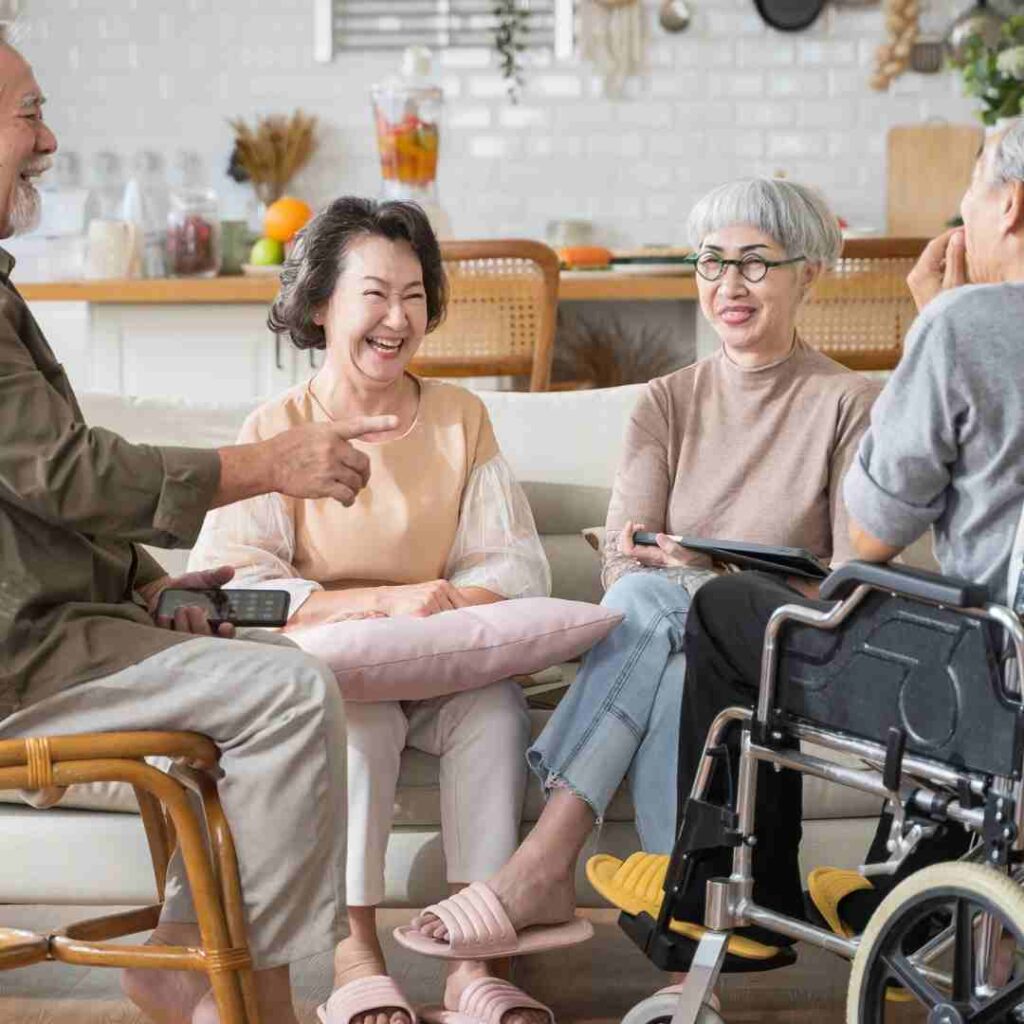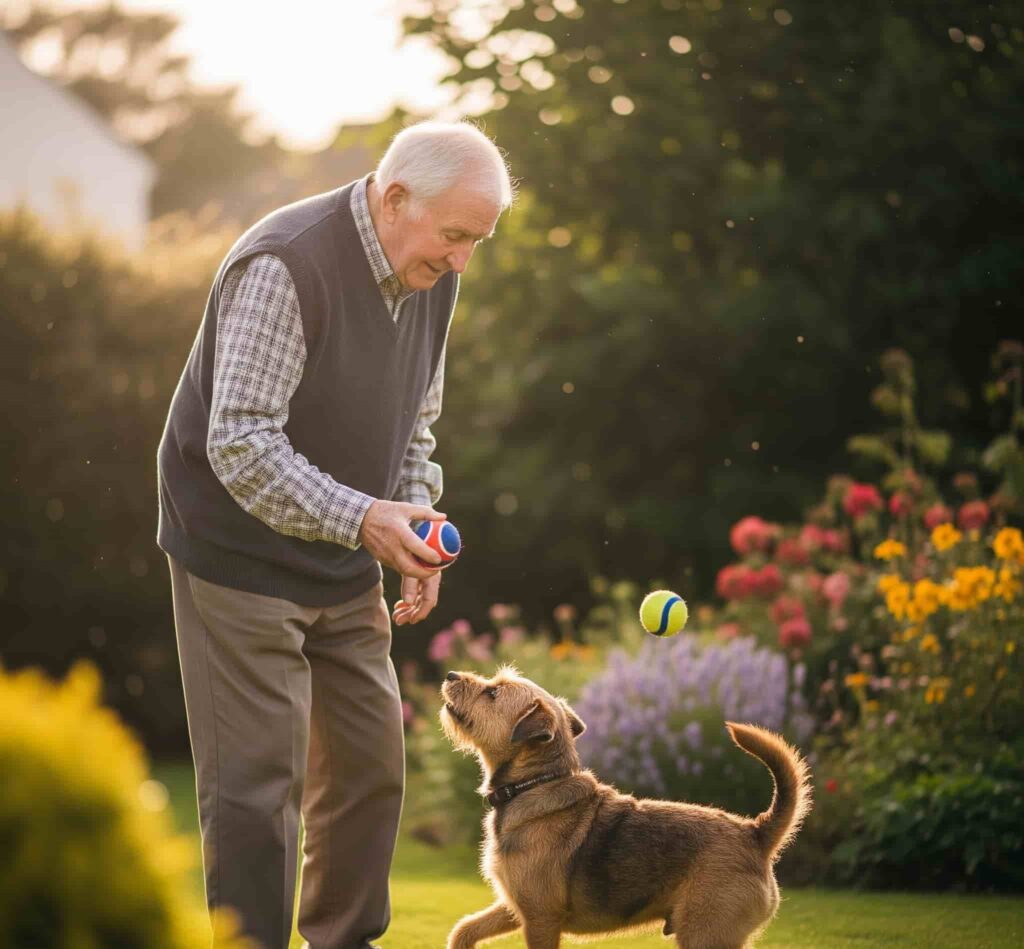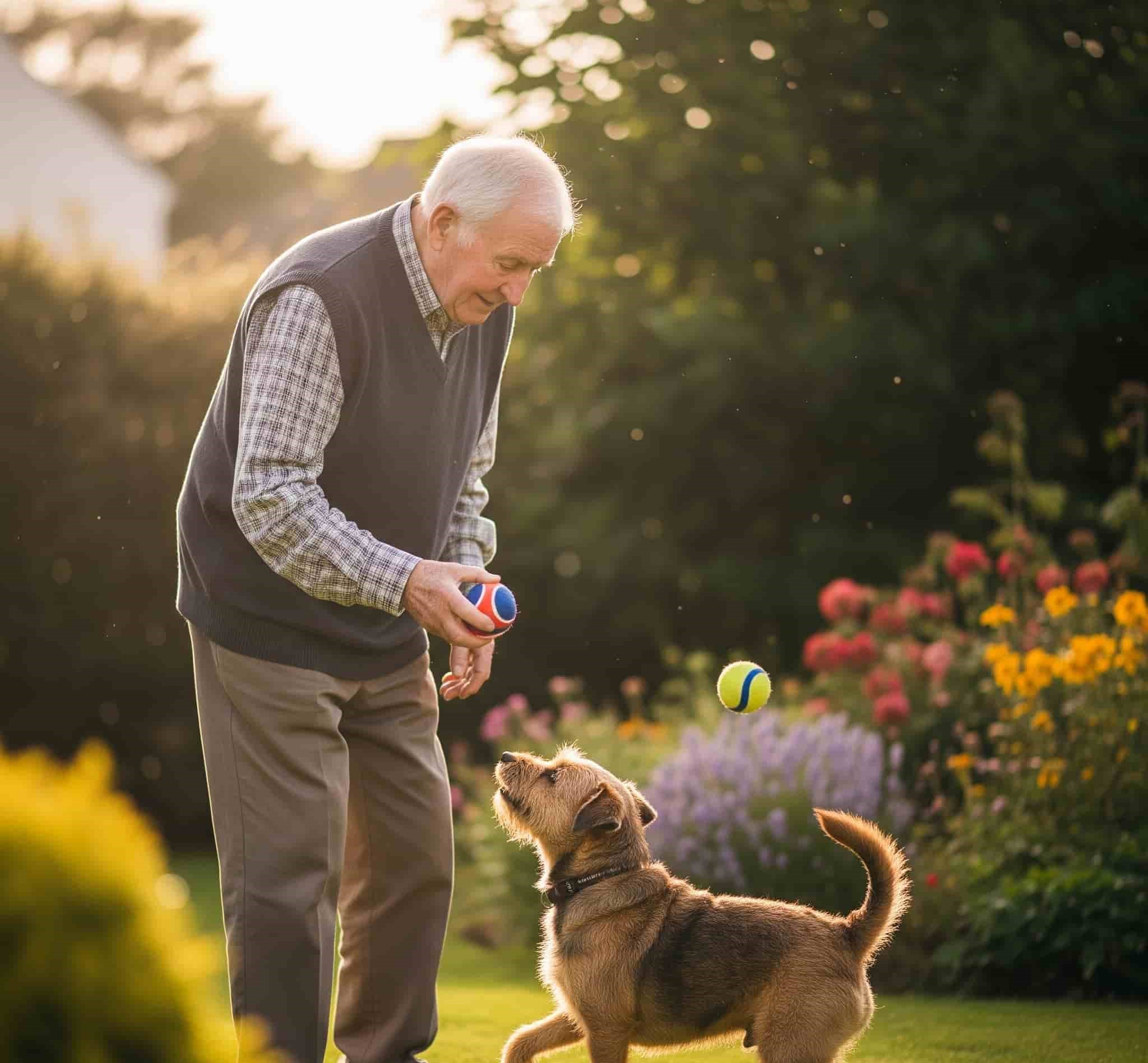-
Talk to Our Care Planner
The Best Activities for Seniors with Dementia: Evidence Supported
Older adults living with dementia benefit most from activities that stimulate preserved abilities.
The right activities for seniors with Dementia can awaken expression, restore calm, spark recognition, and preserve abilities that still remain.
Research shows that the most effective activities for older adults with dementia are those that draw on cognitive resilience, motor routines, social memory, sensory regulation, and creative flow.
This article provides a breakdown of the most evidence-supported activities, grouped by function for any loved ones with Dementia.
Need Help Finding a Compassionate Dementia Caregiver for Your Loved One?

1. Group Discussions That Stimulate Memory and Language

Structured conversation, done in small groups, helps preserve the parts of the brain responsible for language and social reasoning.
Programs like Cognitive Stimulation Therapy (CST), which combine themed discussions, orientation exercises, and memory tasks, have been repeatedly shown to improve general cognition in people with dementia.
CST is often delivered in sessions with consistent groups, where participants talk about topics like food, childhood, current events, or music. These conversations help trigger long-term memory while encouraging present-moment thinking.
How to Implement this at Home
You don’t need a therapist, just 2 to 4 people sitting together with some cues (like printed photos, objects, or music). Keep each session 20 to 30 minutes.
These types of sessions are easier to implement when built into a structured daily routine.
If someone seems tired or confused, gently redirect or take a break. Signs it’s working: the person contributes a word, a laugh, a memory, or even just alert attention. If they go quiet or seem agitated, shorten the session or simplify the topic.
These discussions are usually best for people in the early to middle stages of dementia who can still follow conversation, even with help.
You can also incorporate simple conversation games or trivia-style formats to keep group discussions engaging.
Across multiple clinical trials, group-based cognitive stimulation led to better communication skills, modest gains in memory and attention, and improved orientation to time and place.
The structure and routine of these sessions also support social bonding, something that helps stabilize mood and reduce frustration.
Even when not delivered as a formal program, regular discussion circles around familiar themes, using props or photos to guide the talk, can slow decline in language abilities and reinforce social confidence.
2. Memory Recall Through Shared Stories and Personal Objects

Reminiscence therapy helps people with dementia reconnect with their past through storytelling. This can involve looking at photo albums, listening to music from their youth, handling personal objects, or talking through life milestones.
The goal isn’t just to remember, it’s to find connection, affirmation, and identity.
Studies show that reminiscence therapy improves overall mood, reduces depressive symptoms, and can reduce behavioral challenges like agitation or withdrawal.
In one meta-analysis of 29 studies, people with dementia who participated in structured reminiscence groups showed improved cognition and better quality of life. These sessions also boosted communication, making it easier for participants to initiate and hold conversations.
How this works at home
Try gathering a few physical items from their past; a church bulletin, a recipe book, a work badge, or an old sweater and lay them out one by one.
Ask open questions like, “Does this look familiar?” or “What did you used to cook with this?” Let the person lead. Don’t correct them if the details are wrong. For some people, these sessions bring joy.
For others, they may stir sadness. If tears come, pause, reassure, and check if they want to continue. This activity often works well mid-morning or early afternoon, when energy and focus are higher.
In long-term care, reminiscence is often used in group settings, but it can be just as effective one-on-one.
For families providing care at home, this approach is easy to weave into daily life, with scrapbooks, a favorite old song, the smell of a familiar meal, labeled family photos, or even old clothing or perfumes that spark familiar sensory cues.
3. Multi-Sensory Stimulation That Regulates Mood and Attention

When verbal communication becomes difficult, sensory input becomes even more important. Structured sensory activities, like those used in Snoezelen rooms or sensory gardens, help calm the nervous system and reduce behavioral symptoms.
A recent meta-analysis of randomized trials found that multisensory stimulation led to large reductions in agitation and apathy in people with dementia.
Participants were less restless, more emotionally present, and more able to focus on the world around them. There were also modest improvements in cognition.
These activities include exposure to soft lighting, calming sounds, textured materials, water elements, and soothing scents.
Gentle massage, aromatherapy with lavender or lemon balm, and even guided touch therapy can lower anxiety and aggression in care settings. These effects tend to be strongest during and shortly after the sessions, making them especially useful in late afternoons or during times of agitation.
How to create multi-sensory stimulation at home
You can create a sensory corner at home with simple materials: a soft scarf, a smooth stone, a bowl of warm water with essential oils, or calming music playing in the background. Let the person hold, feel, smell, or observe each item one at a time.

Avoid sharp contrasts or too much stimulation at once. These sessions are especially useful for people in middle to late stages of dementia, particularly when they’re restless or withdrawn.
Start with 5 to 15 minutes and watch for signs of calm, slower breathing, soft smiles, or just staying still. That’s your cue it’s helping.
There is no standard protocol for how often or how long these sessions should run. But across studies, even short sessions produce measurable behavioral improvements.
The common thread is that sensory experiences help bypass damaged cognitive pathways and engage areas of the brain that remain responsive.
4. Personalized Music Programs That Reactivate Recognition
Music remains accessible long after other abilities fade. That’s what makes it so powerful in dementia care. In multiple randomized trials, music-based interventions improved both cognition and emotional well-being in people with dementia.
Personalized playlists, songs tied to an individual’s past can spark recognition, awaken speech, and reduce agitation. People who haven’t spoken in days may start to hum or sing along.
Meta-analyses have shown music therapy improves mood, decreases anxiety, and reduces neuropsychiatric symptoms like restlessness or aggression.
How to Use Music for A dementia Patient at Home
Build a playlist using songs from when they were between 15 and 30 years old, those tend to stick longest. Use headphones for a more immersive experience, especially if they’re easily distracted.
If their face lights up at a certain song, make a note of it. For those who still enjoy movement, clapping along or swaying to the beat can increase the impact.
Play music during transitions (like dressing or bathing) to make routines smoother. Music works in all stages, but the format may change from active singing early on, to quiet listening in later stages.
Music doesn’t have to be passive. Singing groups, rhythm-based exercises, and guided movement to music have all been shown to activate attention and foster group interaction.
The familiar rhythms create structure. And the emotional response, a smile, a foot tap, or a tear, reminds families that something essential is still alive in their loved one.
5. Art-Making That Supports Attention and Self-Expression

Art doesn’t depend on memory. It doesn’t rely on language. And that’s exactly why it works so well for people with dementia.
In a controlled trial, older adults with dementia who participated in a 12-week art and storytelling program showed reduced agitation and apathy, improved communication skills, and higher reported quality of life.
These improvements lasted even 12 weeks after the program ended.
Visual arts, painting, collage, clay, even finger painting engage attention and offer a non-verbal channel for expression. Participants don’t need to follow instructions exactly. The focus is on process, not outcome.
This sense of agency and flow helps reduce frustration and offers moments of control in a world that often feels confusing.
How to get an Art Program Going at Home
You don’t need fancy supplies. A few watercolor paints, magazine cutouts, glue sticks, or air-dry clay is enough. Cover the table, sit beside them, and start creating. Let them copy you or do their own thing.
If they hesitate, offer to draw or color together. Art is especially useful in early to mid-stages, though even late-stage individuals may enjoy the feel of soft brushes or finger painting.
Watch for signs of frustration. If it comes, simplify or shift to sensory art like rubbing textures with crayons or playing with dough. Combining sit-down games with creative tasks like coloring can help maintain engagement
Creative programs also reduce caregiver burden. When a person is engaged in art, they are calmer, more focused, and less likely to exhibit distressing behaviors, giving everyone a break from the stress.
6. Animal-Assisted Visits That Elevate Emotional Responsiveness

People with dementia often withdraw from human interaction. But many open up in the presence of animals.
Therapy animals, mostly trained dogs or cats, increase social engagement and reduce agitation. A systematic review of 32 studies found that 11 of 12 trials showed significant increases in social behavior during animal-assisted visits.
Participants smiled more, talked more, and showed fewer signs of distress. Some also experienced improved appetite, better sleep, and reduced aggression.
The presence of animals activates routines that are deeply embedded: reaching out to pet, stroking fur, making eye contact, speaking in soft tones. These are automatic behaviors that don’t require planning or memory.
For people in the later stages of dementia, this type of connection may be one of the few consistent sources of joy.
Some home care providers even include pet therapy visits or help coordinate them for families.
If a real animal visit isn’t possible, consider soft stuffed animals, petting videos, or robotic pets. Visits from family pets (calm, vaccinated, and trained) can also work.
Watch for reactions, if they smile, follow the animal with their eyes, or reach out to touch, the connection is there. Avoid this if the person has a history of fear or trauma around animals. Keep sessions short (10–20 minutes) and positive.
Even robotic pets, like PARO the therapeutic seal, have shown benefits, especially in care homes where real animals aren’t practical. These interventions are low-risk, low-cost, and often high-reward.
7. Gardening Routines That Encourage Reconnection With Nature

Gardening is a natural form of multisensory therapy. It combines touch, smell, light, movement, and rhythm. That’s why it often succeeds where other activities fail.
Therapeutic horticulture has been linked to reduced depression, better sleep, lower agitation, and higher quality of life in people with dementia.
These effects are not just emotional, they’re behavioral. Participants in gardening sessions are more alert, more cooperative, and less likely to exhibit disruptive behaviors. The activity also supports self-esteem by offering a sense of purpose and productivity.
Planting seeds, watering herbs, picking flowers, each task draws on procedural memory. These are routines many older adults have done for decades. And because the tasks are simple, repetitive, and forgiving, they foster success without pressure.
Sunlight and light movement during gardening may also support sleep and appetite regulation, both of which are often disrupted in dementia.
If you’re hiring help to assist with outdoor routines, be sure they’re trained in dementia-sensitive care.
No outdoor space?
Use indoor pots. A plastic container with soil and simple herbs like basil or mint will do. Let them smell, feel, water, or just observe.
Gardening works best mid-morning, when energy is higher and daylight is calming. If they can walk, try raised beds or a small patio. For late-stage dementia, even running hands through dry beans or planting fake flowers can offer similar comfort.
Need Help Finding a Compassionate Dementia Caregiver for Your Loved One?

8. Task Sequences Based on Montessori Methods
Montessori-based activities for dementia use structured, hands-on tasks that are adapted to the person’s abilities. Think sorting objects by color, matching cards, folding napkins, setting a table.
The strength of this approach is its simplicity. The tasks are clear, familiar, and designed to avoid failure. That encourages participation, even from people who are usually disengaged.
In multiple studies, Montessori-based activities increased positive emotion, reduced apathy, and improved attention during daily routines. In meal settings, they also improved eating behaviors.
This method works because it relies on preserved procedural memory and sensory cues. Instead of asking someone to remember a fact or make a decision, it invites them to act on something they can still do with their hands.
To help you track progress or observe reactions during these activities, keeping a daily caregiver log can be extremely helpful.
How to Use Task Sequences at Home
Choose one simple task at a time: folding towels, sorting silverware, pairing socks. Lay out all materials in a clear workspace.
Use contrast (light towel on a dark table) to help with visibility. If they pause, gently show the next step. Avoid overwhelming them with too many steps.
Aim for 10–15-minute sessions. It’s fine if they don’t finish. The goal is focused movement, not the result.
The result: more dignity, less frustration, and more moments of meaningful engagement.
9. Cooking and Food Preparation as Sensory-Cognitive Practice

Food is one of the last pathways to memory. The smell of a familiar dish, the feel of dough in the hands, the sound of a spoon stirring these are powerful triggers for recognition and comfort.
Adapting kitchen tasks such as measuring, mixing, peeling, or plating — allows people with dementia to participate in a meaningful ritual.
These activities stimulate multiple senses and offer built-in reward: the meal itself. They also activate motor routines, reinforce structure, and support social interaction.
Cooking programs in dementia care have been linked to better engagement and reduced behavioral symptoms. They also create moments of pride and normalcy. The key is to adapt each task to the person’s skill level and keep safety in mind, but the benefits can be profound.
Where to Start?
Start with no-cook or low-risk tasks: spreading jam, rolling dough, shaping cookies, arranging fruit. Narrate each step. “Let’s pour the milk together.”
Use plastic tools when needed. If they’ve loved cooking in the past, this can restore purpose. Offer tastes and smells along the way. Afterward, celebrate their role in the meal, even if it was just one small part.
Final Thoughts
Every activity described here is grounded in real research: clinical trials, meta-analyses, and reviews across years of dementia care studies.
What works best depends on the person. But across settings, the most effective activities are those that respect the abilities that still remain and use them to create connection, rhythm, and meaning.
For families seeking support, many home care agencies in Massachusetts offer structured dementia programs based on these evidence-supported techniques.
Learn more about our full range of services supporting seniors with dementia and their families.
Dr. Ella Njike is the branch administrator for Global One Home Care, Boston, an agency that provides quality care for seniors and kids or adults with disabilities. With a Doctorate and extensive experience working in the healthcare industry, Dr Ella brings a unique understanding to the challenges families face. Through Global One Home Care Boston, he ensures that care extends beyond daily tasks, focuses on building genuine connections and respecting each family's journey.
Contact us
We aim to be an active partner in your care, not to take over. You are the CEO of your care, and we support you in managing it effectively.
Here are some features of our Global One Home Care
- 24/7 access to care
- Customized care plans
- Supervisory visits
- Caregiver introductions
- Nutritional planning
- Respite support
- Companionship
- Mobility assistance
- Durable Medical Equipment recommendations
- Errands and Shopping
- Fall Prevention
- ADLs
